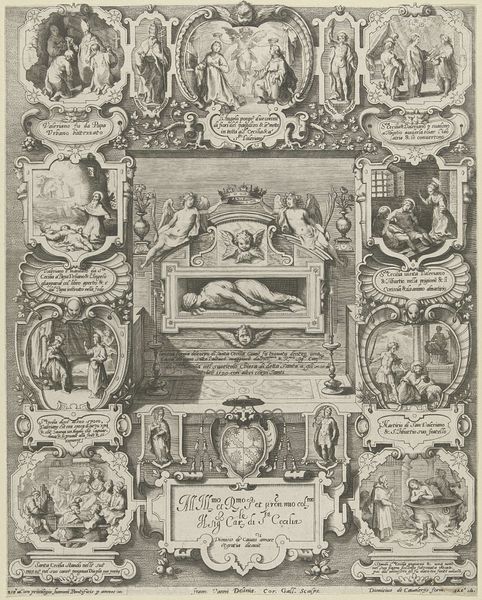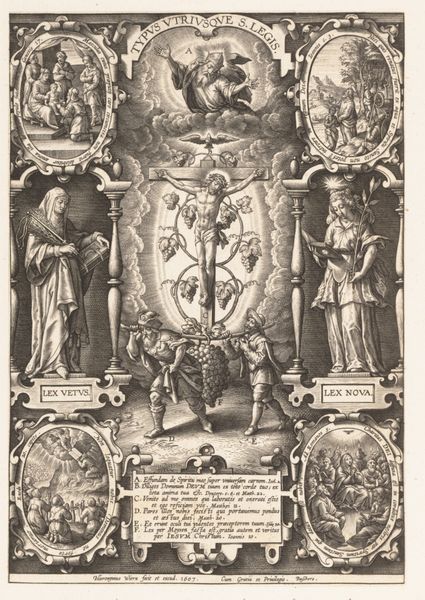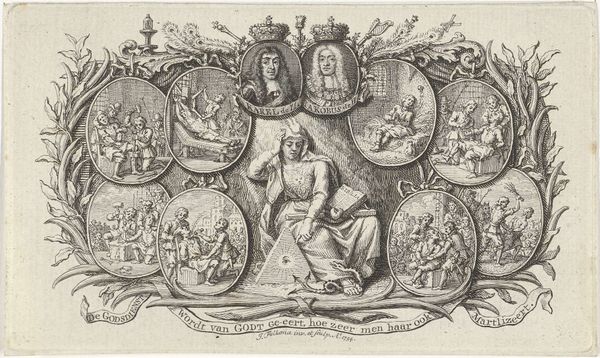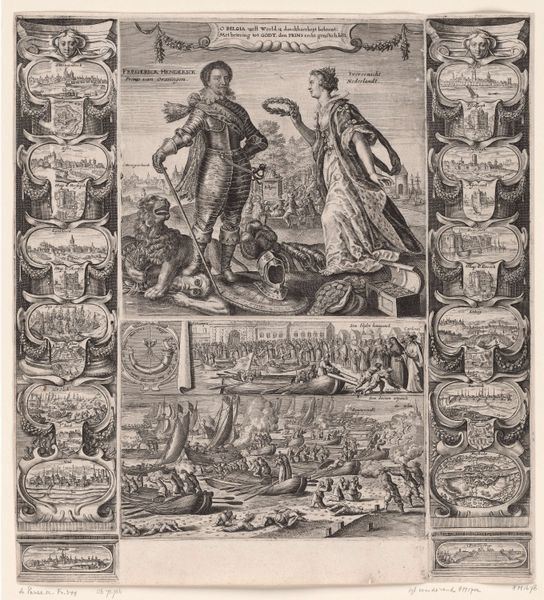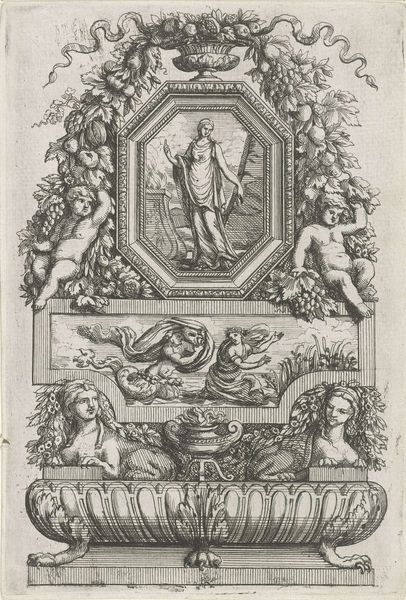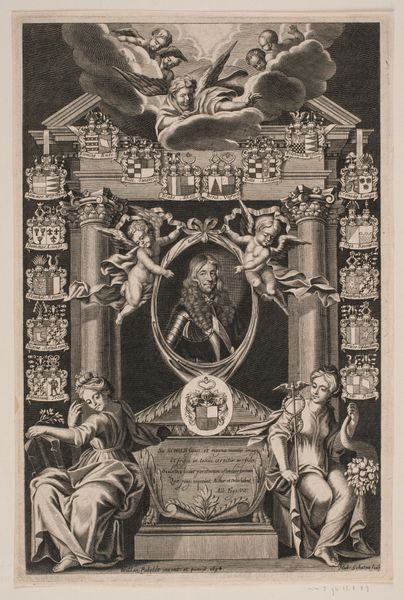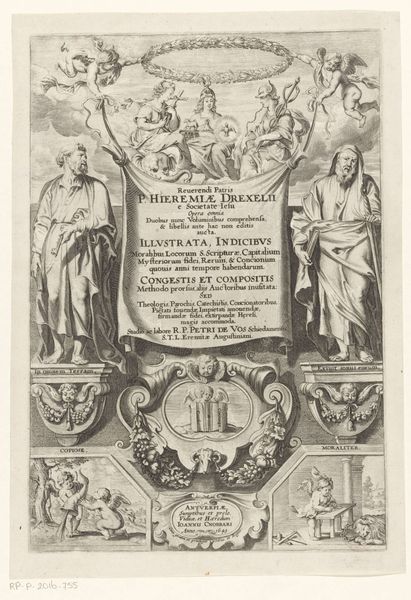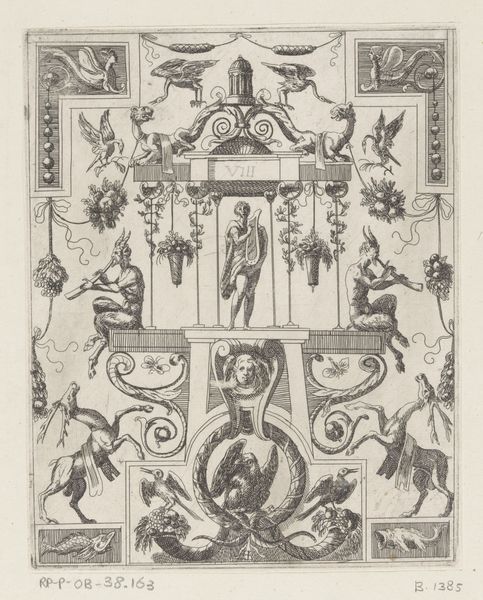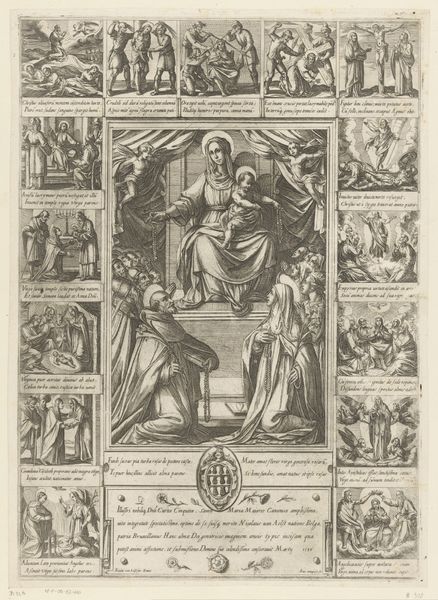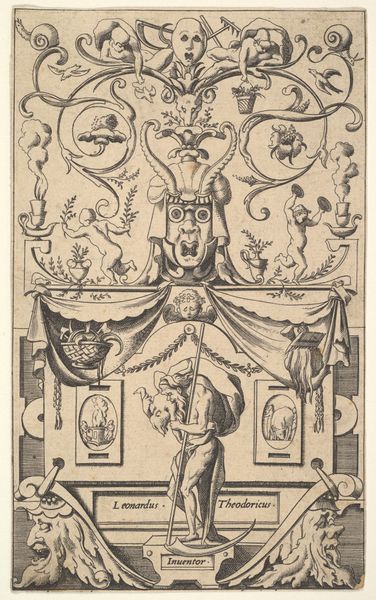
engraving
#
portrait
#
allegory
#
baroque
#
figuration
#
line
#
history-painting
#
engraving
Dimensions: height 312 mm, width 194 mm
Copyright: Rijks Museum: Open Domain
This allegorical print of Emperor Ferdinand III was made by Petrus Rucholle in the 17th century, using the technique of engraving. The print is made by carefully incising lines into a metal plate, likely copper, with a tool called a burin. The depth and spacing of these lines determine the tones and textures of the final image. Ink is then applied to the plate, pushed into the grooves, and the surface is wiped clean. The printmaker then presses paper against the plate, transferring the ink to create the image we see. The linear nature of engraving lends itself well to detailed, symbolic compositions such as this, filled with figures, emblems, and inscriptions. The rigid, controlled lines mirror the hierarchical, ordered world the print seeks to represent. Think about the labour involved in creating such a detailed image, and the social context of printmaking at this time, as a way to disseminate political messages and assert power. This print is not just a picture; it is a carefully crafted statement, made through a process that reflects the social and political order of its time.
Comments
No comments
Be the first to comment and join the conversation on the ultimate creative platform.
